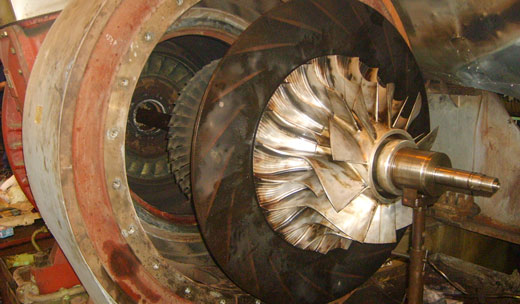
Ships are self contained units floating at sea and hence there needs to be a source of power generation, more than one infact, as well as an emergency backup apart from the main power system. The alternators connected to the diesel generators generate electricity which is then distributed to the different systems of the ship via the main switchboard.
In this article related to ship auxiliary systems we will learn about the general arrangement of the diesel generators and main switchboard on ships. Please note that there are various types of ships, of different sizes, carrying different types of cargoes and so on. Hence there cannot be any hard and fast rule which covers each ship but on reading this article you would be able to grasp the main concept.
Main Switchboard
There are two different types of power requirements on ships namely the 440V and 220V. Infact most of us, even not related to marine engineering understand this pretty well, especially in Asia where normally the 440V is used for industrial connections and the 220V for domestic connections. This is simply because industrial equipments require more power for their operation than general domestic items. Similarly there are heavy loads on ships like say big pumps, winches, cranes etc which require heavy power, while the accommodation and other related uses are similar to the domestic requirements on land.
The main switchboard does the same function like a power substation on land, that is to distribute electricity to different areas as per the requirements and also provide means to monitor and control the power distribution. There are also starter boards which contain the start, stop buttons for most major electrical motors on the ship.
Emergency Backup
Apart from the main power source, there is an emergency back up in the form of batteries as well as an emergency diesel generator. The batteries are sufficient to cover up for the time between the main power failure and the injection of power via the emergency system. Of course in smaller ships, there is not emergency generator and the battery backup is sufficient to keep things under control until the main power is restored.
The emergency power is supplied mainly to equipments like the steering gear, bilge pump, fire pump, navigational equipment, alarm systems and so forth. In short these are the systems which are vital for the existence in the absence of anything esel
The Layout
The schematic layout of the main switchboard on a ship is shown in the figure below. As can be seen there is a dual setup for the port and starboard side respectively to keep the functioning as smooth as possible avoiding any drastic situations.
The next two pictures show the layout of the emergency diesel generator and the normal generators on a ship at various floors. Both these images have a dual view namely side view and top view so that you can understand more readily as to where is the exact system located.

Figure 1: Schematic Layout of Main Switchboard


(Images Courtesy: Wartsila (2008) – Pentti Hakkinen Ship Auxiliaries 11.1 )
Ship Auxiliary Systems: Main Switchboard,





